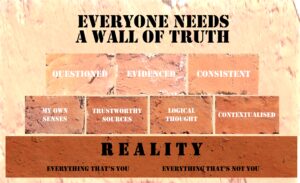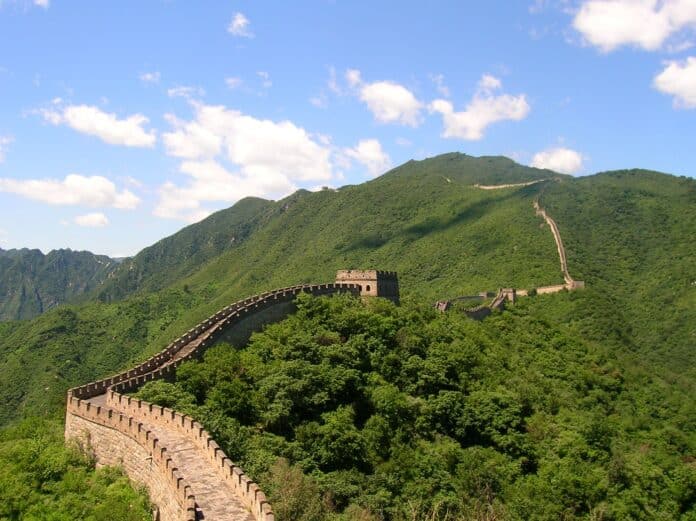In the early decades of the 21st Century humanity faces a pandemic of lies, jeopardising both the fabric of our society and the biological world on which we depend.
This series of ‘short conversations’ by Luke Andreski discusses the weapons we need if we are to overcome our disinformation pandemic – weapons initially of resistance and then of attack.
A trip to Mars
We were talking about survival. Individual survival and species survival.
“Survival’s something I take a personal interest in.”
Me too.
We were talking about enemies. The enemies who are putting us all at risk: the corporations, the media, the greedy and power-hungry 0.1%.
“And you said…”
…that it’s not people or the organisations they run that are our true enemy – it’s the ideas which infect and sustain them.
Yes, I remember saying that.
Invasive eco-catastrophic and sociopathic concepts are the real danger.
<>
If you built a fleet of spaceships and sent the hyper-polluting, over-consuming 0.1% to Mars (preferably in the company of their patron, Elon Musk), in the blink of an eye another conceptually-infected 0.1% would take their place.
To survive, as individuals and as a species, we need protection from the 21st Century mind plague: the plague of misinformation, disinformation, spin, propaganda and lies.
We need a wall. Like a castle wall, or the reinforced walls of a safe room. Only better.
“A wall?” you ask. “Not a shield?”
We need a shield of values, that’s true. That’s key to assessing the morality of the ideas or proposals we encounter. But we also need a wall of truth.
The two hemispheres of identity
There are two components of the human mind which make you who you are:
(i) Your values.
(ii) Your map of the world.
Your values help you decide what’s good or bad, what you do or don’t want to do. They determine your objectives. You could call the aspirational, value-led, goal-targeting you the right hemisphere of your identity. Without these, what sort of identity would you have?
“And the left hemisphere?”
That’s the picture you’ve constructed of what the world looks like, of how the world is. It’s your understanding of what’s out there, what’s real.
Neither of these two hemispheres is useful by itself: they’re like the hemispheres of the brain; each hemisphere needs the other.
Knowledge without purpose (your map of the world without values) is just that: pointless knowledge. What’s it good for, if you haven’t even determined what good is?
And purpose without knowledge? That’s worthless, too. What can anyone achieve – what’s the use of values – if you know f*** all?
<>
Values and knowledge climb each other’s shoulders like an infinity engine. Each step of the way empowers you, clarifying your purpose, deepening your understanding. And there’s no limit. The breadth, consistency and coherence of your identity can always grow.
Dust
But engines need protection. It’s crucial to exclude the dust and grit. And the engine of your identity – perhaps the most important engine there is – needs doubly protecting. You need a shield of values for the right hemisphere, and a wall of truth for the left.
We’ve already worked out how to build a shield of values.
Let’s try our hand at assembling a wall of truth.
Foundations
Walls needs foundations. Not foundations of sand. Not foundations that melt at the first hint of rain. Rock-solid foundations.
But what’s rock-solid enough to support a wall of truth?
“How about facts?”
It’s a great suggestion. I like facts. But what do facts rely on? What’s the foundation on which facts sit?
“Reality?”
I think that’s it. Reality. It’s what everything, in the end, has to rely on. The rock that bears the weight of the world.
“We’ve talked about reality before.”
I like reality.
There’s not enough of it around.
<>
We’re talking, of course, about objective reality – not the relativistic my reality/your reality of the disingenuous. Not the everyone’s got their own reality and they’re all equal kind of reality.
That’s just part of the mind plague. It’s a deliberate misuse of language, intended to attack our confidence about what is or isn’t true.
No. The foundation we need for our wall of truth has to be the real thing. What the word reality was invented to describe. What evolution designed your senses to discover. What you can never truly avoid no matter how hard you try. Verifiable reality. Coherent, consistent, universal reality.
That’s the rock-solid foundation a wall of truth needs.
We’ll build on that.
A wall of doubt
Walls – at least walls with staying power – require building blocks. It’s sometimes useful if they’re the same shape and size, but that’s essentially a bias born of our industrialised appetite for conformity.
The wall of truth has seven building blocks, essential but different, equal but diverse.
Here:

Let’s look at each in turn.
Building block 1: your senses
Your senses – your eyes, ears nose, skin, tongue – evolved to perceive. They’re not a filter. They’re not a drawbridge or a veil. They are your best possible means of accessing the real.
<>
It’s a fundamental building block in your wall of truth which you can use again and again: the validation of your own senses.
Keep your eyes open.
Listen up.
Be alert to all around you.
Observe your own feelings and reactions, your autonomous or habitual responses to your sensations. Exercise your powers of perception – then validate and check.
Building block 2: your sources
The fundamental criteria for truth – of doubt and validation – apply not only to your own immediate perceptions but also to all other sources of information or influence.
Whether these come from video or film, the internet or libraries, from a book, a podcast, a politician or a teacher, these questions always apply:
– Is your source consistent?
– Are they reliable?
– Do they provide evidence?
– Are they honest?
– Is their expertise relevant to this particular information or suggestion?
If the answer to any of these questions is “No”, then it’s possible your source may be attempting to influence you in ways which are self-serving or even malign.
An important ‘tell’ with dishonest sources is their motivation. Are they greedy, power-hungry, narcissistic or selfish? If the answer to any of these is “Yes”, then the likelihood of honesty is reduced in direct proportion to how strongly these descriptions apply.
<>
Ensuring the integrity, honesty and consistency of your sources is a critical building block in your wall of truth.
Building block 3: logical thinking
Truth doesn’t always strike you in the face. It sometimes needs thought.
Your logical thought and assessment, your critical thinking and analysis, is your third building block. No wall of truth is complete without it.
Building block 4: context
The world is full of facts – the particulates of human knowledge. They don’t exist in isolation. They effect one another. They have implications. They form contexts into which other facts fit.
When assessing the truth of something, it’s essential to consider the context. Where does it sit in the big picture? What are its practical and ethical implications? How does it line up with your pre-existing map of the world. Which needs further validation and change: the alleged new fact, or your prior understanding?
Contextualisation – putting things in their ethical, social, practical or personal contexts – is an essential building block in our wall of truth. A fact is not fully understood if you’re unable to see the facts it effects.
Building block 5: doubt
Here’s a strange thing: the most powerful and essential building block in your wall of truth sounds like its enemy.
It’s doubt.
Doubt delivers us from lies.
Doubt is our species’ greatest survival skill: the doubt implicit in questioning the world, in deriving theories, in questioning those theories, in improving our understanding until it draws closer and closer to objective reality.
Doubt is the powerhouse of the modern world: the mother of medicine, the father of science.
Question everything.
Use doubt to chisel your handhold on the real.
Building block 6: evidence
Truth is evidential. If there’s no evidence for a truth, you can’t know it’s true. “I’ve got an intuition”, “Everyone knows”, “You can feel it’s true”, “It’s true because I say it’s true” or “It’s true because X, Y or Z tells you it’s true” aren’t good enough. Anyone can say a thing’s true. We can all have totally different and conflicting intuitions or feelings about what’s true. None of that’s strong enough to be a building block in the wall of truth.
There’s got to be evidence.
It’s got to be based in verifiable reality.
And it’s got to come from the immediacy of your own senses or from honest, reliable and knowledgeable sources.
Building block 7: consistency
No wall will stand for long if its parts won’t fit together.
Facts need to be consistent. That’s the nature of the universe.
Values need to be consistent. That’s the nature of morality.
Each of the hemispheres of your identity – your map of the world and your morality – depend on this consistency. That’s the nature of logic.
Inconsistency is the crack that lets ignorance in.
Mortar
Now you have your building blocks: your perceptions, yours sources, your analysis, your evidence, context, consistency and doubt.
So what holds all these building blocks in place? Can you just pile them one on top of the other and hope for the best?
That rarely works when building walls.
You need mortar.
Something that binds it all together.
The mortar that holds your wall of truth in place, which connects it to its foundations, is you.
You are the mortar: your thinking, your endeavour, your commitment to truth, your perceptions, your honesty.
<>
The wall of truth is not like a prison wall.
It’s not like a sea wall.
It’s not impermeable.
It’s porous.
It keeps the lies at bay but lets the truth in.
And you’re the gatekeeper.
You do the work.
Survival
We each of us need a wall of truth.
I’ve shown you what it looks like, what it’s made of.
If we’re to survive the 21st Century pandemic of lies, if we’re to preserve the biological world, if we’re to thrive in the physical world, we need a firewall for our minds, a shield of values, a wall of truth – and we need it quick.
<>
This is your user manual.
Defend yourself.
Build that wall.
Luke Andreski
Luke Andreski is author of Short Conversations: During the Plague (2020), Intelligent Ethics (2019) and Ethical Intelligence (2019).
You can connect with Luke on LinkedIn, https://uk.linkedin.com/in/luke-andreski-ethics, on Wordpress, https://lukeandreski.wordpress.com/, or via the EthicalRenewal co-op on Twitter https://twitter.com/EthicalRenewal.
With thanks for Great Wall of China image to Nicolas Perrault III, CC0, via Wikimedia Commons. Public Domain, https://commons.wikimedia.org.
For the previous article in this series on Dorset Eye see Everyone needs a shield of values, here: https://dorseteye.com/everyone-needs-a-shield-of-values/
PLEASE SUPPORT US FOR JUST £2 A MONTH








For the next article in this series, describing a powerful technique for attacking the populist wall of lies with which we are faced, please see https://dorseteye.com/the-socrates-bomb/.
For the next article in this series, describing a powerful technique for attacking the populist wall of lies with which we are faced, please see https://dorseteye.com/the-socrates-bomb/.